The Covid-19 pandemic is still at large and shows no signs of letting up which is heightening the possibilities for misinformation to spread. However, organizations like the CDC or companies like Pfizer, Moderna, etc. have many commercials on TV and flyers to help inform the public about ways to stop the spread of the Covid-19 and help increase global health along with recovering from this economic crisis. Beyond the intensive work of generating important and priceless information to be distributed, people are still either not listening or believing other unreputable sources. Health educators are people that are involved within pharmaceutical companies and they are in charge of informing communities about health products along with health releasing advice through health crises like pandemics. Health educators are striving dearly to film many commercials to be aired, create infographics, host informational campaigns and panels. They even send us amber alerts and phone calls to try and inform us on how to get through this pandemic, yet people do not believe or trust these professionals or maybe just don’t understand. If there is scientific information out there accessible to the public, then why do people still not trust or follow the information? In this study, we will look at the company policies on certain scientific information being released to the public and how the public receives/perceives that information along with more or better ways to inform the public. Ever since the first pandemic in March of 1918, fake news was being produced and distributed on several types of mass communication platforms to fill in incomplete information from scientists. After scientists work hard on developing and testing possible solutions for many pathogens, people still do not believe the evidence and turn to misinformed connections. While people have different ways of researching and perceiving information, people are still wired similarly to perform actions when certain information is retained. These types of information can be hindered due to the restrictions of company research which induces fake information yet can be solved by expanding the horizons with their presence in mass media. But before we dive deeper into this underlying problem we need to look into when it all started.
With the present comprehension of how pathogens work, it would make sense to accept the death rate of the Spanish flu, the first pandemic, would never repeat itself again, right? In any case, we need to consider how dangerous and importantly misleading the role of fake news can really play during a pandemic. In the remaining year of World War I, the first dangerous virus was spread quickly around the world creating our first documented pandemic. The first pandemic of 1918 to 1919, the Spanish flu, infected up to 33% of the world and killed up to 100 million people.1
Figure 1
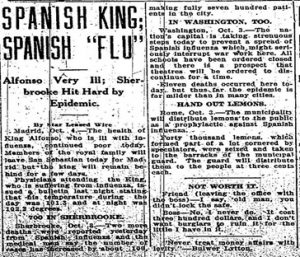
Health specialists were actually unprepared during this pandemic as they had little knowledge of what this disease was or how to protect ourselves from it. Another problem was the use of mass media, as newspapers were basically the only way of receiving information which led to the birth of fake news to accommodate the transfer of pandemic updates demonstrated by Figure 1. The main measure that aided the spread of the flu was to be quarantined, and governments beseeched each other to keep the pandemic out, no matter what. Paranoid notions proliferated and blamed the pandemic on World War I which was obviously the enemy. However, there were numerous instances of misinformation, especially about the way that the pathogen spreads. A few accusations about who or what contributed to the Spanish flu shifted the blame towards foreigners, or Jewish people, or specific cultural practices like music or dancing, on the bombing of the soil as a result of the war, and on essentially whatever else you could imagine. Certain people exploited the chaos and confusion from this first pandemic. One of the most interesting facts of the Spanish flu was the psychosis that was one of the symptoms of the infection, it also included mild hallucinations to severe delirium and even extreme violence. This realized side effect was utilized by some as ‘fake news’ to try to dupe those in power. The Spanish flu was frequently blamed as an explanation by people as to why they performed many crimes. The Spanish flu was presumed the fault for terrible behavior, of a less extreme assortment: negligible burglary, delinquency, unrationed behaviors and any unusual and impulsive behavior. Sometimes the flu is a veritable justification behind some calamity, yet in all respects, the flu is used as an excuse for crime or bad behavior. But reflecting on what made the health professionals so unprepared, we can now say with confidence that with many scientific advancements we have in the tools and the leverage to empower health officials. However, health officials and educative campaigns often come up short on informing the public because they publish information based on what needs to be advanced or promoted, rather than leaning on existing perceptions. With such trouble understanding what is real or fake, there needs to be a better understanding of how humans are wired and how we think or operate and how we interpret information. The mind is such a mysterious thing as it resembles as much as a fingerprint, everyone thinks and interprets information differently.
Whether it’s terse, persuading, full of emotion, or dribbling with allusions, language is an instrument for conveying importance and a particularly human necessity in which you vibrate your vocals to make your deepest thoughts spring up in another person’s brain.2 You can use it to discuss a wide range of things and when you talk, your audience fills in heaps of details you didn’t specify. What’s behind this enchantment? How does meaning function? At the point when we hear words and sentences, we connect with the pieces of our brain that we use for insight and activity, repurposing these evolutionarily older networks to create simulations in our minds. These simulations make it feasible for us to turn out to increase our performances by simply visualizing something being done; what permits us to recall which cabinet the snacks are in without looking, and what makes it so difficult to chat on a cell while we’re driving on the highway.3
Figure 2
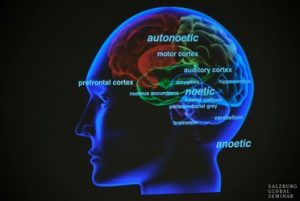
As others have recently argued, the importance of understanding information goes beyond knowing the meaning of words. In understanding language, our minds take part in an inventive approach of developing rich mental universes in which we see, hear, feel, and act. People are social beings and over the past decade, a growing body of work has revealed how personal discernment is affected by the presence of others.4 Not in the least do we quickly recognize others in our current circumstance, yet we adjust our regard for their consideration, which impacts what we see, represent and remember.5 Another reason is that behavioral groupings are categorical, with perceptual categories such as sounds or pictures are what people are more familiar with, while conceptual perceptions and temporal categories of actions constitute the actual meaning or understanding of the context of information that is perceived. Concept taxonomies are themselves ordered and categorized, corresponding to familiar taxonomic hierarchies in cognitive models which is seen in Figure 2.6 Succeeding in the method of situate cognition, there are clues in the particulars of human activity, such as typing errors, how a computer interface is used, how a child learns to play in a swimming pool, odd limitations in language comprehension, and so on. Ultimately, this analysis is shown to be the link that may lead to an improvement of both symbolic and neurally based models of memory and behavior, with concomitant implications for cognitive psychology, artificial intelligence, and cognitive science as a whole. Overall, we usually side with information that seems more appealing. So are mind performs in unique ways in which content is presented but what happens to cognitive ideas or is way of understanding hindered by the restraint of government policies? As we know the more information the better, yet there is sometimes too much information or important/private information that we are not allowed to see. Always keeping in mind that everyone may contextualize the information differently.
The United States and different nations all over the world deal with issues of an inexorably global nature that frequently require huge commitments from science and designing a solution is impossible for a single country. The development of science and designing is an inexorably worldwide venture, and in numerous areas there is a characteristic shared trait of interest among specialists from different societies. In light of difficulties, the National Academies held a workshop in Washington, D.C., in February 2011, to survey successful ways of meeting global difficulties through sound science policies and science diplomacy.7 U.S. and international perspectives on world science strategy and science diplomacy summarize the issues that tend to be addressed during this symposium. Members talked about many of the qualities of science, like it’s expected language and techniques; the open, self-adjusting nature of exploration; the comprehensiveness of the main inquiries; and its regard for proof. These familiar perspectives are relevant to science around the world and impose special constraints on science in promoting communication and collaboration.
Figure 3
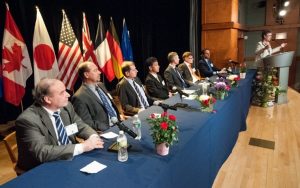
Many members called attention to this as seen in Figure 3, that advances in global science and science strategies are corresponding and are making them stronger, often including comparable measures. Some members suggested that it might sometimes be more accurate to use the term “global scientific collaboration” rather than “scientific discretion.” Many members have shown that scientific discretion is often a sound and worthwhile idea, describing noteworthy, documented examples of successful engagement with global logic to create positive legislative linkages and manage delicate and pressing issues. The interlinkages between ethics, policy, and science in a fascinating and easy-to-understand way. For a mixed public audience, we need to move beyond dry theory to explore some of the difficult ethical issues that scientists and policymakers face every day. The defining term “bioethics” is extending well beyond human well-being to wider relations between humans, nonhuman animals, the environment, and biotechnologies.8 For example, the U.S. Microorganism Research Policy was protested by 758 scientists, as these scientists sent an appeal to the overseer of the National Institutes of Health fighting the change in the open approach from exploring normal microbes to those that may be essential for a bioterrorism assault. More than 700 researchers appealed to the head of the National Institutes of Health.9 Such policies can hinder the important information that could make or break a person’s decision of trusting professionals and allow them to see through the appealing view of fake news.
Because our minds work in a way of pointing out differences within the mountain of information which has the same resemblance of finding the needle in a haystack but that doesn’t mean that the information is true. So why do companies or governments themselves withhold policies to release certain scientific information to the public? Well, it could be many things or many ways to think about it. One reason could be maintaining the peace within the population as devastating news could spark riots or a panic to consume supplies for an upcoming economic drought. For example, if the government said that there is a virus that has almost a 100% transmission rate and you have a 50% chance of surviving then people would go ballistic to stock up and this can stir up a national scarcity. Also, if companies were blunt about vaccines contents or what they did to create the products that are consumed daily, there can be speculations that will be filling in any informational gaps. For example, the Covid-19 vaccine lists ingredients that are used to suppress symptoms of aids or HIV, can lead people to speculate that the vaccine is tied to aids. Worst case scenario, people could think that the vaccine would cause the rise of aids or HIV, which is why some information is not released. Another example is the use of a significant person or a celebrity as a spokesperson, it’s like a bandwagon of thinking “Well if they say this then that’s what I should agree with.” For example, Figure 4 shows that a former president handling the situation, and the use of this poster is to induce the feeling of relief as someone will handle it for us which leads to the theory of our thinking based on convenience.
Figure 4
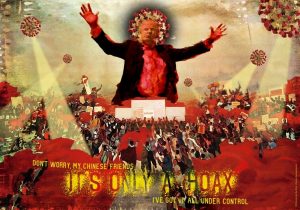
Another reason for some strict communication policies deal with business. There are many pharmaceutical companies and they all compete for better quality, and product cost of production and effectiveness. If companies release private information about their products, then other competitors can replicate this product and target more reachable areas or try to make a better product for a profit. Also, there are copyrights and patents in place which by law restricts the use or duplication of the company’s work by any means necessary. At the same time, the United States emphasis of a free market economy is the reason why there are actually so many different manufacturers offering vaccines for Covid-19, all trying to become the dominant pharmaceutical company by producing an effective yet efficient vaccines. One way consistent way to bring out as much information from companies as possible and is through health educators. Health educators are people from the companies or organizations placed are in charge of releasing the information to the public whether it’s through the radio, TV, or flyers, etc.10 However, it seems like health educators still have yet to have an effective way to reach people which today means the use of social media, which most of us know and love.
Web-based entertainment has been widely used for the mapping of health-related data and, in turn, for the possible spread of clinical deception.11 With an enormous populace of web clients from China, it could be sensibly expected that Weibo, WeChat, and TikTok (and its Chinese variant Douyin) would be more researched in ongoing examinations. In December 2019, a new type of extreme respiratory virus called Covid-19 was discovered and has spread globally, finally being declared a pandemic by the World Health Organization on March 11, 2020. For physicians and unified clinical specialists, this time period varies due to expanding and rapidly changing data from numerous provincial, public, and global health experts, guiding bodies, and specialist affiliates.12 While web-based entertainment platforms play a role in the dissemination of data and the dynamic collaboration of clinical experts within them, customary channels such as email have not been emphasized for communication purposes. There are amazing open doors presented by web-based entertainment stages, for example, Facebook, Reddit, Instagram, and Tik Tok to spread clinical data both for the utilization of doctors and as a way to impart basic data to the general population at large.13
As we are seeing the advancement of online entertainment employ worldwide, the ubiquity of web-based entertainment should likewise should be embraced by medical services experts. There is an unmistakable need for rigorous examination of new rising virtual entertainment stages, the efficiency of rules and instructive intercessions, and the particulars of every calling with regard to their web-based entertainment potential and use. Social media is the gold mine of viewers as more needs to be done than updating a website or advertising on TV or radio. People now are more into appealing content such as TikTok. TikTok is viewed as a type of social media yet in company terms, it is actually an entertainment platform as it appeals to the short attention spans that us viewers have from ten-second videos to one-minute videos. TikTok is available in over 150 countries, has over 1 billion users, and the app has been downloaded over 200 million times in the United States alone, so health educators should take advantage of the massive number of viewers. However, the approach needs to be different as no one wants to sit through a boring video. It needs to be within the same realm as other entertaining videos to be appealing, informative, and enjoyable or easy to follow. A way that health educators can be active within TikTok could be to approach the platform as a marketing advertiser with a budget to work with TikTok. Buying placement within the platform assures a following and message consumption. Of course the bigger the budget, the more views advertisers will receive. So if advertisers start with a small budget, then there will be a lower showings of the ad which leads to minimal viewers. With all this work to get noticed, health educators can partner with other TikTok influencers that already have a big fan base to share content that needs to be advertised like a sponsorship on a YouTube video. But, quantity of views doesn’t mean that the meaning is captured as peoples’ conditions actually affect the way people view information that is advertised.
At the end of the day, it is our choice whether or not to accept or decline the types of information that is seen on social media which is a part of our responsibility as a consumer. Given they way individuals perceive information differently there will always be an upward slope of deception with the ongoing number of pandemics or other potential outbreaks. As humans, we side with what we experience and what we see so what is not seen or known, therefore can’t be trusted which is linked to the lack of communication overall. Starting with the Spanish flu as the only mass media available at that time was the newspaper, people struggled to receive information and will gravitate to the most convenient source. At the point when we hear words and sentences, we connect with the pieces of our brain that we use for insight and activity, repurposing these evolutionarily older networks to create simulations in our minds. These simulations make it feasible for us to increase our performance by simply visualizing something being done. Alongside how we think, the policies and copyrights of certain information being released will always be regulated to prevent substantial assumptions of what the information means and to support the continuation of the competitive pharmaceutical market. The advancement in modern science is useless if we don’t have the necessary skills or tools to convey its use or effects. There will always be fake news on social media until we are able to get the appropriate information to the public which is why we will always be within an infodemic unless health educators adjust to what is popular.
- Allen, John. The Spanish Flu Pandemic of 1918. Historic Pandemics and Plagues. ReferencePoint Press, Inc., 2022. ↵
- Benjamin K. Bergen, Louder than Words : The New Science of How the Mind Makes Meaning (Basic Books, 2012). ↵
- Paul Thagard, The Brain and the Meaning of Life (Princeton, N.J.: Princeton University Press, 2010). ↵
- Dora Kampis and Victoria Southgate, “Altercentric Cognition: How Others Influence Our Cognitive Processing,” Trends in Cognitive Sciences 24, no. 11 (November 2020): 945–59. ↵
- William J. Clancey, Conceptual Coordination : How the Mind Orders Experience in Time (Mahwah, N.J.: Psychology Press, 1999). ↵
- Rosario Tomasello et al., “Brain Connections of Words, Perceptions and Actions: A Neurobiological Model of Spatio-Temporal Semantic Activation in the Human Cortex,” Neuropsychologia 98 (April 1, 2017): 111–29. ↵
- U.S. and International Perspectives on Global Science Policy and Science Diplomacy : Report of a Workshop (National Academies Press, 2012). ↵
- Jonathan Beever and Nicolae Morar, Perspectives in Bioethics, Science, and Public Policy, Purdue Studies in Public Policy (Published in collaboration with the Global Policy Research Institute by Purdue University Press, 2013). ↵
- Scott Shane, “U.S. Germ-Research Policy Is Protested by 758 Scientists,” The New York Times, March 1, 2005; Dragan Ilic et al., “What Are the Attributes of a Good Health Educator?,” International Journal of Medical Education 7 (June 28, 2016): 206–11. ↵
- PhD Gerald Kayingo PA-C and Dnp Virginia McCoy Hass Msn, Rn, Fnp-C, Pa-C, The Health Professions Educator : A Practical Guide for New and Established Faculty (New York, NY: Springer Publishing Company, 2018). ↵
- Andy Wai Kan Yeung et al., “Medical and Health-Related Misinformation on Social Media: Analysis of the Scientific Literature,” Journal of Medical Internet Research, December 20, 2021. ↵
- Tea Vukušić Rukavina et al., “Dangers and Benefits of Social Media on E-Professionalism of Health Care Professionals: Scoping Review,” Journal of Medical Internet Research 23, no. 11 (November 2021): 1-N.PAG. ↵
- Marzieh Eghtesadi and Adrian Florea, “Facebook, Instagram, Reddit and TikTok: A Proposal for Health Authorities to Integrate Popular Social Media Platforms in Contingency Planning amid a Global Pandemic Outbreak,” Canadian Journal of Public Health: A Publication of The Canadian Public Health Association 111, no. 3 (June 1, 2020): 389–91. ↵
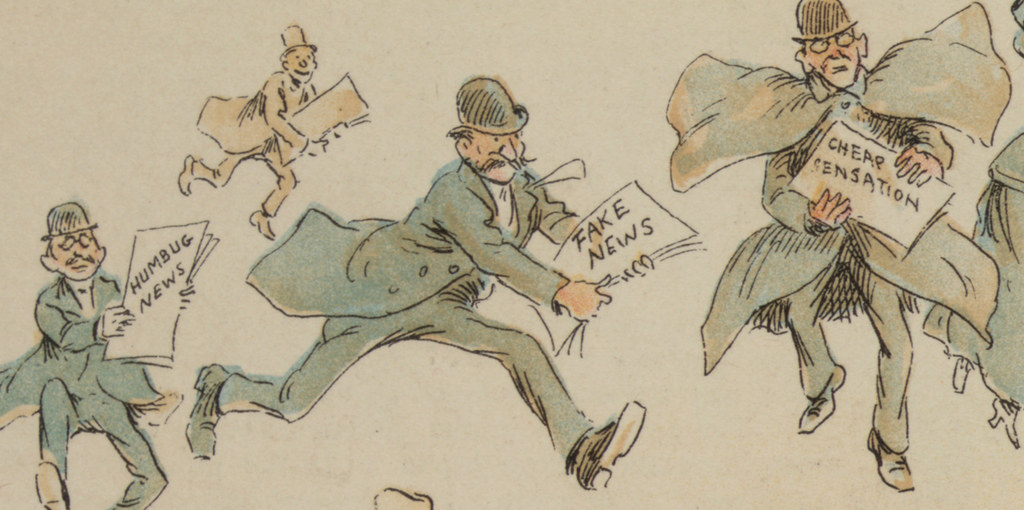
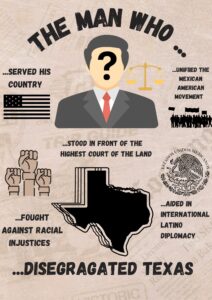
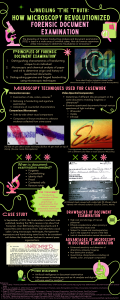
8 comments
Gonzalez Elizabeth
Good evening Christian I hope all is well. I would like to express my satisfaction with the volume of knowledge that this post so comprehensively delivered. I am amazed at how much significance you highlighted in how many individuals were concerned about whether or not to trust medical experts during the pandemic. A method of warning people worldwide about what to do during the COVID-19 outbreak was to use prior experiences or knowledge about the past. I admire that you gave healthcare professionals a way to use applications like TikTok to share knowledge and educate the public about critical health information. It is reliable what you said regarding the way our thoughts may be positioned to receive the most enticing information. People may just want to hear what they want to hear, so they might not consider what is true or the best course of action. As you stated, the onus will always be on us to take information and use it to the best of our abilities.
Kelly Arevalo
Very interesting article! It is true that during this pandemic we have witnessed the spread of fake news and misinformation, causing all types of reactions between people, from extreme care to avoid contact with the virus to people believing it wasn’t real. I think, however, that there are far more layers to this problem. It was not only misinformation but also a political battle and a lack of information. At the beginning of the pandemic, there was a wave of discussions about Covid-19 being linked to China’s biological experiments and blaming the WHO for covering the spread of this illness in China’s territory. That plus the fact it was a completely new virus that experts were not sure how to deal with. So, the amount of unorganized information people were receiving contributed to expanding the general panic and the misinformation. I liked how you address this problem and the issue of the “levels” of transparency, or how much information can be given to the public at once. Good article!
Madeline Chandler
This was an extremely well-written article, and it was so detailed. It was so interesting because it is so relevant to the current times. This article was very intriguing because of the issues between media and events with the spread of false information. I believe that your article truly highlights an issue that needs to be fixed. I think our lives would look a lot different if misinformation was not spread on such a normal basis.
Mauricio Rebaza Figueroa
Hi, Christian. This is a good article. You explained clearly all your points and helped me realize how important is to always be well informed, especially on topics really important such as health. During the last couple years we all saw how misinformation can really affect a lot of people. Thank you for the good images and sources that made your article a really good one. Overall, you did a good job.
Katelyn Canales
Hello Mr. Guerrero, I first off wanted to tell you congratulations on receiving a nomination for an award! After reading your article, you really do deserve it. This was a very interesting topic to discuss, because receiving true information these days can be hard, or mislead depending on which media outlet you are trying. I loved how you tied in misinformation regarding current issues today such as COVID. I like how you tie in Human Biology in this topic and mention how exactly we receive information and why. The human neural model you provided was very informative. Awesome find! Good luck! 🙂
Anissa Navarro
I think your article highlights the hysteria people have when hearing about advances in medicine or warnings about certain health problems. In the end yes it is up to us individually to listen to who we choose, but I wish people would listen to the scientist over the politicians and big companies. Your article was well written.
Matthew Gallardo
This article was very informative. I always knew about the lack of transparency and only knew one reason and it was to prevent panic, but this article shows it goes much deeper than that, from competition between pharmaceutical companies to web based misinformation. It also opened my eyes to how hard it is for one streamlined solution is impossible due to the global nature of our world. Thank you for bringing this to my eyes and I’m very glad I read this article!
Paula Ferradas Hiraoka
Hello Christian,
First of all, congratulations on your nomination and getting your article published!
I found your article pretty interesting, there is a lot of information in your article which I considered relevant, the picture’s choice was perfect and the picture for the cover I really like it. Information and media is playing a huge role in our life respecting to covid, and this article talks about that in many points.
Overall, amazing work and good luck!